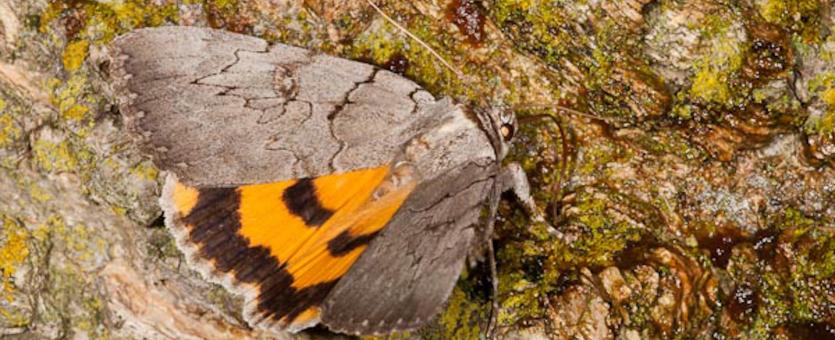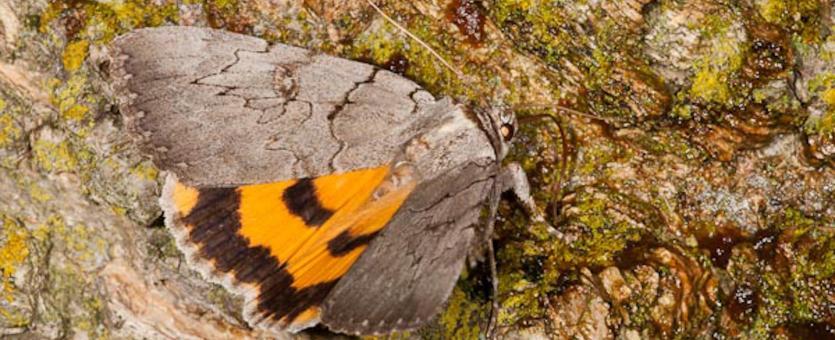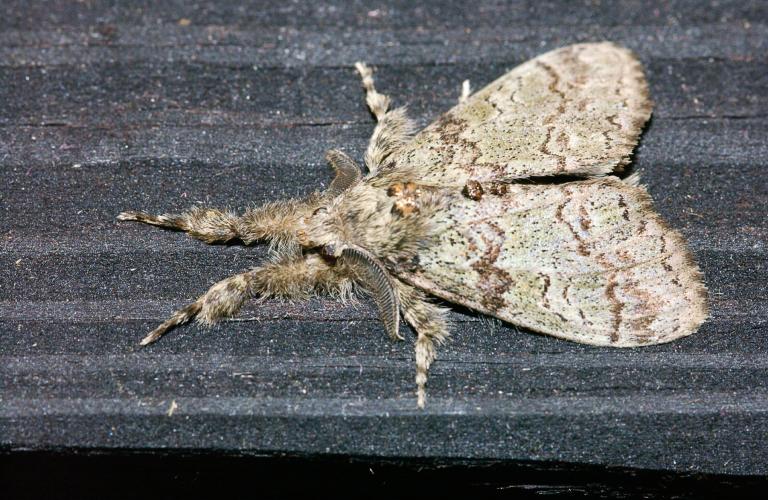Have some family fun in your own backyard with creatures that fly by night. Moth Sugaring is an old adventure with new thrills.
In just three simple steps, your family can view and photograph colorful and rarely seen underwing moths. First, mix up a sugary batch, then paint it on a backyard tree, and return with flashlights after dusk to see who came to dinner.
The batch can be as easy as bananas and beer or whatever you have on hand. Most online recipes list three main ingredient types including alcohol, sugars, and ripe or rotting fruit. Creating a mix with the consistency of syrup will work best. Use a paintbrush to apply the mix in a square shape, thick enough to not run down the tree.
Moth wings, drab on the outside to blend with trees, open while feeding to reveal brilliant colors and bold patterns. This fun and educational family activity is easy to achieve. It's always a surprise to see who comes to dinner at your tree. You may see several different species with a variety of colorful and interesting features. You can view these over a few nights to see what comes and goes. This activity can be done throughout the summer and fall.

Underwing Moths
- Underwing moths are most common in deciduous forests and forest borders, and wherever their food trees grow.
- They typically rest on tree trunks during the day, which explains their forewings’ perfect tree-bark camouflage. They also often rest in caves, under ledges, on rocks, or among leaf litter on the ground.
- All Missouri species of underwings are single-brooded, feeding in the larval stage on the foliage of trees and shrubs and overwintering as eggs, usually on the bark of trees.
- Unlike moths that overwinter as mature caterpillars or as pupae, underwings must hatch from eggs in the spring and then grow through all their larval stages and pupate before we can see any adults flying around.
For more on the underwing moth, visit MDC’s Field Guide.




Recent Posts
























